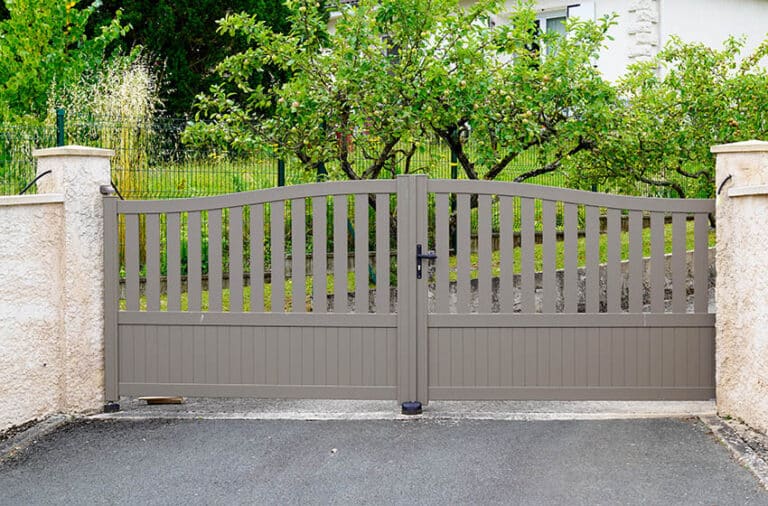Touch vs Touchless Faucet (Differences, Pros & Cons)
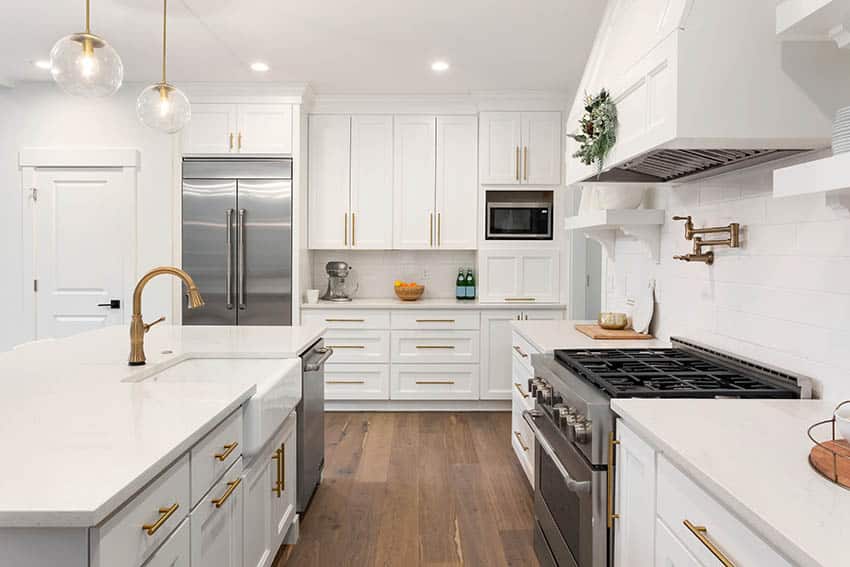
When it comes time to choose a faucet, there are more options on the market than there were a decade ago. Consumers used to have a choice on the number of handles — did they want one or two? A two-handled faucet required manual adjustment of the water temperature by precisely controlling the flow of hot and cold water.
A one-handled faucet used to be the rising star in kitchen hardware — one handle or knob that automatically adjusted the flow of hot or cold water, depending on how it was positioned. But now, two new choices have entered the competition: touch and touchless faucets. What are the differences? Which is better? Read on to find out more.
Differences Between Touch & Touchless Faucets
The main difference between a touch vs touchless faucet is already clear from the name. Touch faucets require physical contact with part of your body in order to work. Note that this must be bare skin — you cannot tap the faucet with your sleeved elbow and expect the water to start. A touchless faucet uses a sensor to detect when water is needed, and turns the water on and off automatically. No touch is needed, from any part of your body.
How Do Touch Faucets Work?
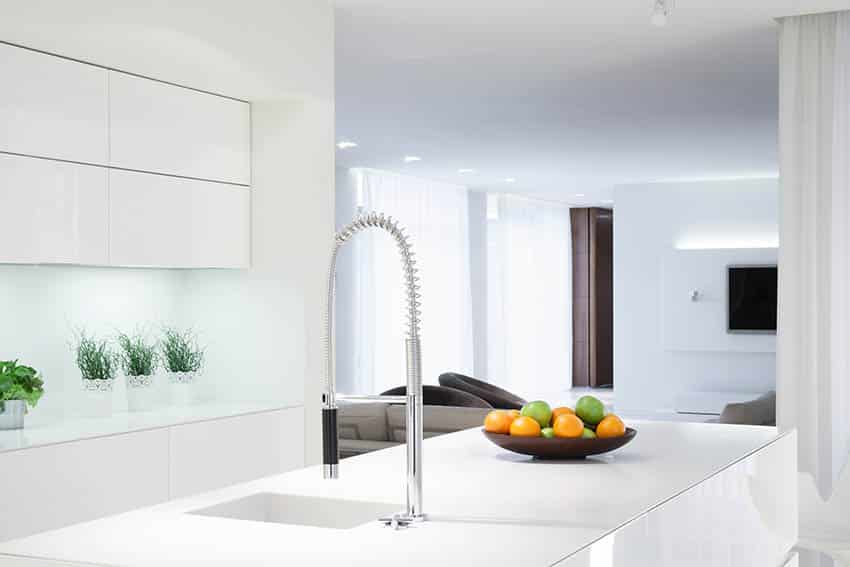
Touch faucets have two sensors — one at the base of the faucet and one near the spout, where the water comes out. These sensors are connected by a thin piece of wire, which makes the entire metal surface of the faucet a conductor for small amounts of electricity. When you touch bare skin to the faucet’s surface, the static electricity naturally present in your body acts as a signal to the sensor, and the water turns on.
Some models have automatic shut-off features. The water will start at full-force, and then the flow will slow and eventually stop. These are great for houses with small children, who may not be able to understand the importance of turning off the tap when we’re done washing our hands.
You can also choose a faucet that requires another touch of bare skin in order to stop the flow of water. There are even models available that have two settings — automatic or manual shut-off — so that you can choose or switch back and forth depending on your needs.
The temperature of the water is controlled by a tiny handle at the base of the faucet, allowing you to get hot or cold water on demand. However, you may not need to adjust this very often if you calibrate your faucet properly. A professional installer can help you decide on the ‘default’ temperature of the water that comes out of your faucet.
Pros and Cons of Touch Kitchen Faucets

Convenience – Probably the best feature of a touch faucet over a regular faucet is its ease of use. Touch sensitive faucets are great for families with young children or live-in seniors as they can be simple to turn off and on.
Accessibility – Touch kitchen faucets are a fantastic way to make sinks accessible to people with mobility challenges, seniors, and children. They don’t require fine motor coordination or a long reach to operate, and many shut off automatically.
Water Conservation – The slightly higher electrical cost of a touch kitchen faucet over a traditional model is usually more than offset by the conservation of water.
Cleaner Surfaces—A touch faucet requires occasional cleaning, but nowhere near as much as a traditional faucet. The sensor is reliable, allowing you to wash your hands without spreading germs.
May be Difficult to Install – The biggest con of a touch faucet is that it may be more challenging to install on the sink. Additionally, you may see a small increase in energy use which is offset by typically lower water costs over a regular faucet.
How Do Touchless Faucets Work?
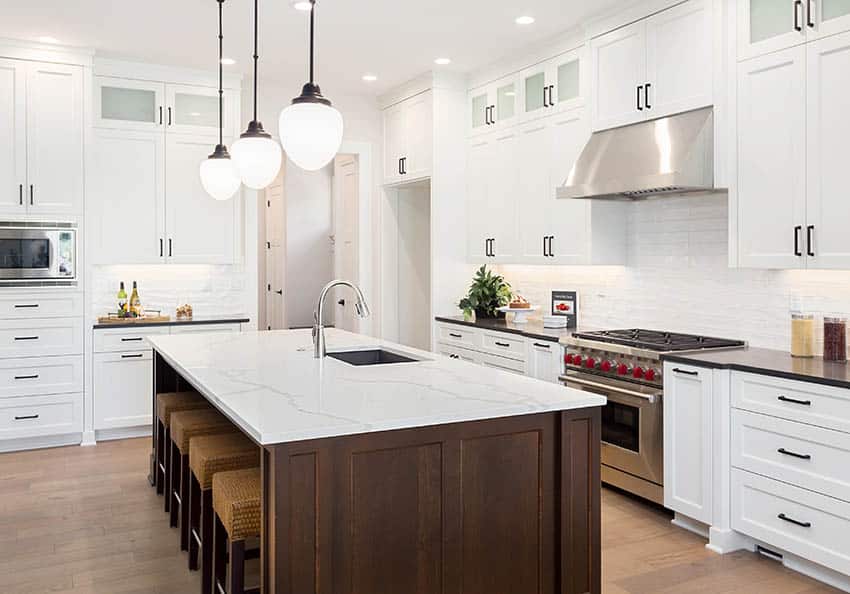
Touchless faucets are sometimes called ‘motion-detecting faucets’, but this is actually an outdated understanding of the technology involved. These innovative kitchen gadgets don’t merely detect motion, rather they detect the presence of something in the area under the spout, and respond by opening a valve. This allows water to run through the tap and complete your kitchen activity.
There are two types of touchless faucets currently available: infrared, and ultrasonic field.
An infrared touchless faucet has a small infrared light, usually at the base of the faucet. Humans can’t see infrared, but if we could, we’d see a beam of light projecting into our sinks.
When we place objects such as dishes or hands in front of that beam, it bounces the light back toward the base of the faucet. Once the reflected light hits the infrared sensor (usually located just next to the light), the circuit completes and a message is sent to turn the water on. The water will stay on as long as the infrared sensor detects reflected light.
An ultrasonic field touchless faucet also has a sensor at the base, but it doesn’t depend on reflected light. Rather, this sensor monitors a 3D area of your sink called an ‘ultrasonic field’, and when something disrupts or enters that field, the sensor automatically turns the water on. Ultrasonic field touchless faucets are the latest technology and are seen to be more consistent than infrared products.
Like touch faucets, most touchless models have built-in temperature settings. During installation, you can choose the ‘default’ temperature of the water. Should you require water of a hotter or colder temperature, this can be adjusted manually through the use of a small handle at the base of the faucet.
Pros and Cons of Touchless Kitchen Faucets
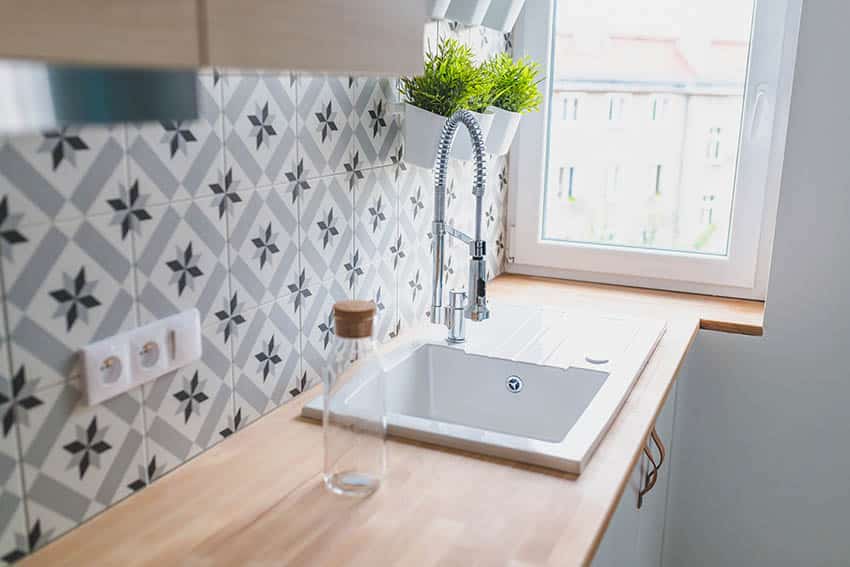
Convenience – Touchless is a great choice for those who may have trouble operating a traditional faucet. This is especially true for those with limited mobility, such as the elderly or for families with young children.
Cleaner Surfaces – The benefits of a touchless kitchen faucet are numerous and obvious. Your faucet will stay cleaner for longer because you have no reason to touch it. This is also safer and more hygienic, preventing the transfer of germs to a handle that multiple people in your household or workspace may touch.
Water Conservation – These types of kitchen faucets allow you to save considerable amounts of water over standard kitchen faucets. Touchless faucets like touch sensitive faucets have low flow rates and are more environmentally friendly.
Older Models Can be Glitchy—Older touchless faucet models sometimes had issues with false signals—turning on when not needed—but their consistency and reliability have improved significantly since they were first introduced, and this is no longer an issue.
More Expensive – Touchless kitchen faucets are more expensive to purchase than traditional faucets and require professional installation. They also may need batteries replaced every few years.
Which Faucet Type is Right for You – Touch vs Touchless?
The choice between a touch vs touchless faucet is merely one of preference — you can’t make a wrong choice. Both touch and touchless faucets are a major improvement over the traditional faucet in every way. They are easier to operate, stay cleaner, transfer fewer germs, and do everything that a traditional faucet can do. They are both highly reliable.
They have the same drawbacks — namely, they require professional installation and may need the batteries changed every year or two. Some consumers prefer the control of turning the tap on and off by touching it, while other users would rather not come into contact with the surface of the faucet.
Both preferences are legitimate and valid. If you don’t feel strongly, it might be best to make the decision on other factors, such as battery vs hardwired, or total cost of the individual model and installation in your area.
Are Touch and Touchless Faucets Safe?
Many people feel concerned about introducing electricity into the bathroom or kitchen sink. The concerns fall into two categories: what if the power goes out? And what if I get electrocuted?
Many models of touch and touchless faucets run on battery power — usually, two AAA batteries, although lithium batteries are becoming more common as technology advances.
The battery usually lasts for one to two years and can be changed by homeowners with nothing more complicated than a Phillips-head screwdriver. Other models are hardwired into your power source.
Whatever model you choose, you can rest easy knowing that the water flows through non-conducive pipes, and the electricity has completely separate housing with proper insulation. A properly installed, functioning faucet carries no risk of electrocution, be it traditional, touch, or touchless.
But what if the power goes out? Will I still be able to use my faucet? If it’s battery-powered, the answer is yes!
However, if the only power source is the hard-wired electricity, and this service is disrupted, you will not be able to use your touch or touchless faucet until the power is restored. For the best of both worlds, choose a model that can operate on either battery or mainline power.



